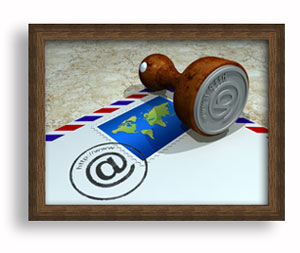How to Make Your Website Work – The missing piece of Independent Agent Magazine Online’s feature on why most agency websites don’t generate revenue or reduce expenses. IA tells you what to fix, we’ll tell you how.
Does Your Agency Need a Website and How Do You Make One Work?
The November edition of IA Magazine Online (see the technology section http://www.iiaba.net/iamag/index.html) presented the idea that most independent insurance agency web sites don’t work. How do you know if your website works? Does an independent agent, particularly a local agency even need a website? If your agency website doesn’t work what needs to be done to fix that? How would you do it? This newsletter addresses these questions in two parts. Part 1 tells you how to make your website work once you have a solid foundation. Part 2 tells you what you need for a solid web foundation.
First, the question of whether your agency needs a website that works. A 2001 study by the IIABA revealed that 75% of consumers researched insurance online before buying. That number is almost certainly higher now. A 2005 survey performed by Adjoined Research showed that 80% of consumers wanted the ability to switch back and forth between using the web and doing business face to face or locally. Consumers no longer see those options as distinct ‘channels’; they prefer their insurance provider to have both available. Finally, the banking and wireless phone industries have discovered that customers who perform online self service are more satisfied and profitable than other customers. So clearly, an agency that doesn’t have an effective online presence is missing a lot of opportunity and is at significant risk of customer defection.
--Part 1--
Building on a Foundation and Making the Web Work
Just because you build a better mouse trap doesn’t mean you will be able to sell it. The same is true for your agency website. In part 1 of this article we explore the four things your agency needs to address so your website will contribute to bottom line results: getting people to your site, keeping them there once they visit, getting them to explore your website getting them to bring others.
Objectives should be set in these areas so you can evaluate your website’s effectiveness at contributing to your bottom line. Confluency Solutions has a guide that is closely related to this called 7 By 4 Principles:
- You have 7 seconds or less to keep someone on your website
- You need a site visitor to visit 7 areas on your site to fully appreciate all the value your agency can add
- You need a visitor to return to your site 7 times so that your website becomes a habit
- You need 7 website referrals per customer using your site
We need to start with the assumption that you have a solid website foundation laid with professional appearance, ease of use and good content (for more on this, see Part 2). Next, it is crucial you get your customers to your website. Recently published statistics indicate an average agency can expect 35% - 60% of their customers to have high speed internet access at home. An additional 30% - 40% will have high speed internet access at work. This group will comprise 50% – 75% of most agencies customers and is the group most likely to expect web service options. A modest starting objective is to have 30% of your customers regularly visiting your agency on the web. For some ideas on how to bring that about check out the tips in Show Your Customers The Way.
7 Seconds or Less
That’s the most time you have to engage a visitor before they click their mouse and move to another website. You engage someone by getting them to click something or enter information right away – interaction is the key. Text laden pages without a good reason for interacting are a common mistake. There is an acronym for the balance that needs to be struck – MALT – More Action Less Text. For a good example, check out the cFluent Personal Property Analyzer. There is plenty of explanatory text but there is also an offer to get an answer to an important question: is underinsurance placing your personal property at risk? The Personal Property Analyzer (PPA) is actually an application, as distinct from content. Applications give your agency the advantage of customizing content and information for site visitors.
7 Areas Visited
Ultimately you need all the services customers want out on your website. As you build content and add applications you will have that. For example, the currently available cFluent Tools provide four distinct areas for customers to visit with frequency (Glossary, FAQs, Claim Manager Personal Property Analyzer). Others that can be added are newsletter type articles (you don’t necessarily need a ‘newsletter’), annual review and other checklists and forms. You can ‘feature’ sections each month as part of your recorded on-hold message, as a footer in print communications or as separate mailing campaigns to customer segments. When more of your site is utilized by visitors the habit of visiting your site becomes more ingrained. This is important because you want your agency website to be the primary resource for the pre-purchase research customers and potential customers will do.
7 Return Visits
Return visits are part of making your website a habit. Ideally you want those return visits to be concentrated in a shorter period of time. Several months is OK but weeks are better. There is a concept Confluency uses with the cFluent Tools called PUSH-PULL. Snail mail can be used for this but email is better. Once you give your customers a good reason to give you their email address (so you can notify them when you have fresh content, or for setting up a secure online area to keep customized information, for example) you can use email for PUSH-PULL. The concept simply means push email out to pull visitors in. Email pushes are free of postage, print and handling costs and can include links back to your site to exactly the areas you want to have visited. It is a best practice to get consumers to give you permission to send them email (opt in) or at least make opting out obvious and easy.
7 Website Referrals for Each Customer Using Your Site
Seven referrals per customer may seem wildly optimistic but, in fact, it is very realistic using the web, email and the principles of viral marketing. viral marketing is word of mouth on steroids. By using viral marketing principles an agency can facilitate rapid and exponential referral growth. The key principles are these:
1. Provide something of value (your website content and applications)
- Make it free
- Make it easy to transfer and share that free, valuable something
If you do that you will get referrals that grow across each successive referring ‘generation’, just like a virus. The first generation is your customers (see illustration). Email makes the transfer across generations inexpensive and fast. Confluency embeds elements of viral marketing in all the cFluent Tools and you should make sure any valuable contents or applications on your website can be easily referred to others.
If you can embed the Principles of 7 By 4, MALT, PUSH-PULL and Viral Marketing throughout your website you will see a dramatic increase in revenue. At the same time, the greater proportion of customers doing business with via your website and email will drive costs down. Both of these results should be easy to measure and relate back to your website changes.
--Part 2—
Most of the Best Agency Websites Don’t Work but They Have a Good Foundation
It’s worth the redundancy to repeat the question: how do you know if your website works? The simple answer is if your website contributes to income or reduces expenses in amounts greater than the investment and upkeep of your site. In order to answer the question though, you need to be able to measure the contribution your website is making. That measurement can be sophisticated if your website includes traffic reports and a database that monitors user activities on your site. Or the measurement can simply consist of correlating ‘hits’ to your website with sales increases. Either way, if you are to honestly assess if your website works you need to be able to measure some contribution. (For an idea of how to calculate contributions of website components take a look at the cFluent Claim Manager online calculator at http://www.iiaba.net/iamag/index.html).
What needs to be done to fix a website that doesn’t work? The Independent Agent Magazine article cited three areas to focus on: appearance (or design), ease of use (site navigation) and content. However, even if you address each of these areas your website may not produce much in the way of measurable results. These items are just the foundation. How to build on the foundation and generate income or cut costs is covered in this section.
The IA article makes the case that, if your website doesn’t look professional it will reflect poorly on the image of your agency – a visitor making a judgment on amateur design is probably going to move on. Fortunately, professional looking (if unsensational) design is not very expensive – but you shouldn’t rely on an IT generalist for this. Instead engage a web designer and preferably one who knows the insurance business.
Ease of use simply means that a website visitor can get what they want without confusion, excessive mouse clicks or getting forestalled by needless flash animations. Ease of use is really part of good web design and that’s why it is important to use a designer who knows your business. They will know how to lay out a website that works for your agency; if you can’t find a web designer who knows your business then plan to take the time to teach someone about your business.
Content is a little trickier but not difficult. The IA article suggests a number of valuable tips for website content and we won’t revisit them here. But the article does not make a distinction between ‘content’ and ‘applications’. The difference is important when it comes to customizing content and keeping visitors at your site. Customers who use your online facilities and customize their content usually will also have an excellent ratio of commission to service expense and very high rates of renewal.
Perhaps the most important thing to keep in mind is that your website needs to be about the consumer. Content that is too heavily weighted toward information about your agency, your companies or your products will prevent your website from working. What do consumers want? First, consumers want peace of mind that their insurance program is right for them - 90% see that as the primary value of insurance. Other surveys indicate that 70% - 75% of consumers don’t understand their insurance program very well. 99% of consumers surveyed by Progressive Insurance said they wanted to able to have their needs met 24/7. So content needs to be primarily concerned with educating consumers in their areas of interest and providing peace of mind. And the content and applications that satisfy these needs should be available on your website 24/7 – an email form won’t do.
Hopefully this newsletter has given you a good idea for how to make the web work for your agency. Additional information is available through free online webinars or by contacting Confluency Solutions (info@confluencysolutions.com or 877.351.2600)
Show Your Customers the Way
Many agencies rely on the search engines like Yahoo and Google to bring visitors to their site. Search engine traffic is free but increasingly competitive. You can use content, key words, title pages and site maps to optimize your site. This gives your site the best chance of getting found in key word searches but bear in mind that search optimization (SEO) has become much more sophisticated and costly. Expect ongoing annual costs of $5,000 for quality SEO. A better and far less expensive place to start is with your own customers.
 about 2 hours per week per employee. In a four person office, that adds up to a day’s payroll for an employee. Email is good you say.
about 2 hours per week per employee. In a four person office, that adds up to a day’s payroll for an employee. Email is good you say. more satisfied, profitable and stay with their service provider longer. Verizon Wireless has one of the highest online, self-service usage levels and one of the lowest customer churn rates in their industry3 and that’s no coincidence. Bank of America noted that 50% of their customers who use online banking rate their service satisfaction a 9 or 10 out of 10 vs. only 41% for the general customer population4.
more satisfied, profitable and stay with their service provider longer. Verizon Wireless has one of the highest online, self-service usage levels and one of the lowest customer churn rates in their industry3 and that’s no coincidence. Bank of America noted that 50% of their customers who use online banking rate their service satisfaction a 9 or 10 out of 10 vs. only 41% for the general customer population4.
